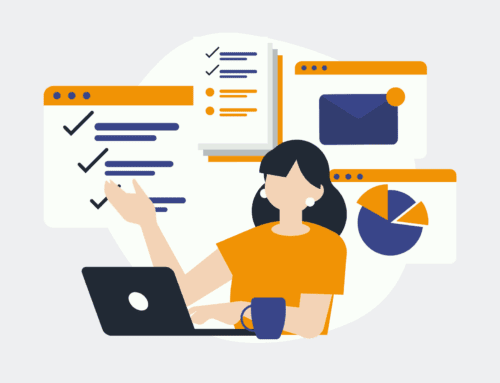Using Google Analytics and ChatGPT for Enhanced AI Analysis
Introduction to Google Analytics and ChatGPT
In the ever-evolving world of digital marketing, understanding your audience is key. This is where tools like Google Analytics come into play. With its comprehensive data collection ability, Google Analytics allows businesses to track user interactions across their websites. From traffic sources to user behavior, it paints a detailed picture of who your audience is and what they’re interested in.
On the other hand, ChatGPT, developed by OpenAI, is an advanced language model that takes AI capabilities to a new level. Imagine being able to analyze this vast pool of data with the power of AI. Sounds exciting, right? Let’s delve deeper into how combining Google Analytics data with ChatGPT can enable businesses to conduct enhanced AI analysis.
Why Combine Google Analytics with ChatGPT?
The synergy between Google Analytics and ChatGPT is like having a seasoned detective teamed up with a brilliant analyst. Google Analytics collects raw data about user sessions, demographics, and conversions. However, interpreting this data into actionable insights can be overwhelming without the right tools.
This is where ChatGPT steps in. By integrating AI analysis, businesses can easily interpret complex datasets. It helps in forecasting trends, understanding customer behavior, and tailoring marketing strategies accordingly. Imagine knowing exactly what your audience wants before they even realize it themselves!
Setting Up Data Transfer Between Google Analytics and ChatGPT
Before you dive into analyzing your data, you need to set up a seamless connection between Google Analytics and ChatGPT. The process involves using templates and APIs that facilitate the flow of information from one platform to another. Think of it as setting up a conversation between two tech-savvy friends.
First, ensure your Google Analytics account is properly configured to track the metrics you need. Next, leverage platforms like Make.com that offer templates to send total users and sessions by country from Google Analytics directly to ChatGPT. This setup enables ChatGPT to receive fresh data regularly, making your analysis timely and relevant.
Benefits of AI-Powered Analysis
By now, you might be wondering about the specifics of what AI-powered analysis can do for your business. For starters, it significantly reduces the time spent on manual data interpretation. Instead of sifting through endless spreadsheets, you get concise reports highlighting key trends and anomalies.
This kind of analysis also enhances decision-making. With clear insights at your fingertips, you can make informed choices that align with current market dynamics. Moreover, AI analysis can uncover hidden patterns that might not be visible to the human eye, providing a competitive edge in strategic planning.
Best Practices for Using AI Analysis
Integrating AI into your analytics strategy sounds great, but how do you ensure you’re doing it right? First up, always define your objectives clearly. What do you hope to achieve with AI analysis? Is it improving campaign performance, increasing conversion rates, or something else?
Another important practice is continuously refining the algorithms based on feedback and results. Things change rapidly in the digital world, so staying adaptable is crucial. Lastly, ensure data privacy and compliance, especially when dealing with user information. Make sure to follow all relevant legal guidelines and regulations.
Challenges You Might Face
While incorporating AI into your analytics toolkit offers numerous benefits, it’s not without challenges. One common issue is the complexity of integration. Both platforms, Google Analytics and ChatGPT, are robust systems that require careful configuration to work cohesively.
Additionally, managing data accuracy can be tricky. AI analysis is only as good as the data fed into it. Inconsistent or incorrect data can lead to flawed insights, so maintaining data integrity should be a top priority. Don’t forget the need for keeping systems updated to handle new types of data and evolving analytical needs.
Conclusion: Embracing the Future of Analytics
As technology continues to evolve, so too must our approach to data analysis. Combining Google Analytics with ChatGPT represents a significant leap forward in deriving meaningful insights from complex datasets. Businesses that harness this combination effectively are poised to understand their audience better and strategize for success.
By embracing AI-powered analysis, companies not only keep pace with technological advancements but also gain a transformative view of their operations and opportunities. As we forge ahead, it’s clear that the future of analytics lies in the seamless blend of human insight and artificial intelligence.
FAQs
1. How does ChatGPT analyze data from Google Analytics?
ChatGPT analyzes Google Analytics data by receiving structured information through APIs, allowing it to process and generate insights based on the trends and patterns observed in the data.
2. Is it difficult to integrate Google Analytics with ChatGPT?
While the integration requires some technical setup, using platforms like Make.com simplifies the process with predefined templates for data transfer, making it accessible even to those with limited technical expertise.
3. Can AI replace human analysts in interpreting data?
AI enhances the analysis process by handling large datasets and identifying trends quickly. However, human insight is still crucial for contextual understanding and strategic decision-making.
4. What industries benefit most from this integration?
Industries with significant online presence and customer interaction, such as e-commerce, finance, and digital marketing, benefit greatly from integrating Google Analytics with AI analysis tools like ChatGPT.
5. How do I ensure data privacy when using these tools?
To ensure data privacy, always comply with legal guidelines such as GDPR or CCPA, and use secure, encrypted connections to transfer data between platforms.









